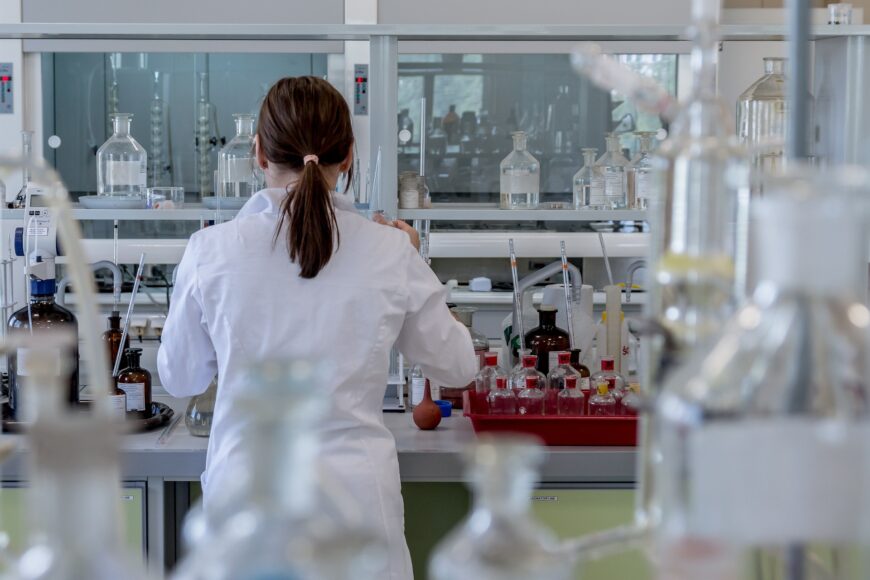
Analytical chemistry is a complex discipline that focuses on extracting information about the composition and structure of samples using advanced techniques. Generally speaking, these samples must be separated into their component parts for identification and quantification. Thus, separative techniques like gas chromatography (GC) are central to the field. Both qualitative and quantitative analytical methodologies are deployed in various industries, including environmental monitoring, food and beverage, petrochemicals, and pharmaceuticals.
This blog post will delve into the principles of gas chromatography and how it helps analytical chemists obtain, process, and communicate information about different substances’ chemical and structural properties.
Principle of Gas Chromatography
We’ve discussed the working principles of gas chromatography at length, but the basics are worth recapping with specific reference to analytical chemistry. Gas chromatographs are most commonly used to separate and analyze organic molecules and permanent gases by vaporizing compounds without inducing thermal decomposition. It is used to analyse compounds with a boiling range from nC1 to nC100, although most applications are within a narrower boiling range of nC3 to nC44. These classifiers refer to the carbon number of a hydrocarbon mixture. For instance: nC1 is the first in a mixture with a single carbon atom, such as methanol, which has one carbon atom and a boiling point of 64.7C.
Gas chromatography is used extensively in analytical chemistry setups in the pharmaceutical industry for drug development and quality control. It is also used in the food and beverage industry for flavor analysis and adulteration detection. The petrochemical industry uses gas chromatography for petroleum analysis and quality control. Environmental monitoring is another application of gas chromatography, where it is used for air and water quality analysis.
What Role Does Calibration Play?
Gas chromatography detectors must be calibrated to ensure accurate and precise results. Calibration involves creating a standard solution that contains known concentrations of the compounds of interest. The standard solution is run through the system, and the resulting chromatogram is compared to that of the analysed sample. The concentration of the compounds in the sample can be calculated by comparing the peak areas or heights.
A hydrocarbon gas calibration mixture is typically produced by blending two or more pure hydrocarbon gases in precise proportions. This is done to create a gas mixture with a known concentration of each component, which can be used to calibrate sensors, and other analytical instruments used on the analytical chemistry test bench.
Here are the steps involved in producing a hydrocarbon gas calibration mixture:
- Determine the required concentrations of each component: The first step in producing a hydrocarbon gas calibration mixture is to determine the required concentrations of each component. This is typically done by referencing regulatory standards, industry guidelines, or other specifications.
- Select pure hydrocarbon gases: Once the required concentrations are known, pure hydrocarbon gases that contain the components of interest are selected. These gases are typically obtained from gas suppliers or may be produced in-house through purification techniques.
- Verify the purity of the gases: The purity of the pure hydrocarbon gases must be verified through gas chromatography or other analytical techniques to ensure that they do not contain any impurities that could affect the accuracy of the calibration mixture.
- Blend the gases: The pure hydrocarbon gases are then blended in precise proportions to create the desired hydrocarbon gas calibration mixture. This is typically done using specialized equipment that allows for precise control of the gas flow rates and pressures.
- Analyze the mixture: After the mixture is blended, it is analyzed using gas chromatography or other analytical techniques to verify that the actual concentrations of each component match the required concentrations.
An optional sixth step is to fill and certify cylinders, creating standard or certified reference materials (SRM or CRM). The certification process requires validation by an accredited lab. This step is optional, as analytical chemists no longer need to rely on cylinder supplies for gas chromatography calibration. At-line gas mixers can generate hydrocarbon mixtures for calibration purposes on demand.
Looking for Gas Calibration Solutions?
Environics® has the perfect solution for your gas mixing needs with the Series 4000 and 4040 gas mixing systems. The Series 4000 can mix up to seven individual gases in a balance gas, producing gas concentrations from percent to ppb levels for single or multi-point calibration. The Series 4040 is a computerized gas dilution system that automatically generates precise gas standards for rapid multi-point calibration of analyzers, making it easy to use fewer cylinders. Both systems can be used to create gaseous atmospheres or produce gas mixes for analytical research or production purposes. Contact us to learn how our gas mixing systems can improve your analytical chemistry capabilities.

